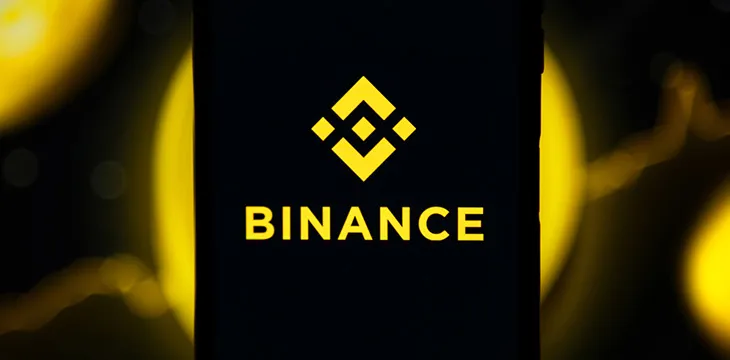|
Getting your Trinity Audio player ready...
|
Binance has been conditionally approved to acquire the assets of bankrupt ‘crypto’ lender Voyager Digital, despite regulators raising red flags and Binance itself admitting to fudging the assets backing its in-house stablecoin.
Following a Tuesday phone hearing, U.S. District Judge Michael Wiles granted initial approval to the deal in which Binance’s U.S.-facing digital asset exchange Binance.US will assume control of $1 billion in digital assets frozen last July when Voyager filed for Chapter 11 protection. Voyager customers will see their assets transferred to accounts on Binance.US, after which they may choose to withdraw or cash out said assets.
The transfer is still a long way from a done deal, requiring further tinkering of the deal contract language as well as a majority vote by Voyager customers on whether said contract meets with their approval. The next hearing on the deal isn’t scheduled until March.
There’s also the small matter of the national security review being conducted by the U.S. Committee on Foreign Investment in the United States (CFIUS), which expressed concern over Voyager effectively being acquired by a foreign company that refuses to establish a permanent headquarters. Judge Wiles dismissed the CFIUS objections as “really non-issues,” at least, as far as the preliminary matters before the court on Tuesday.
Tuesday’s conditional approval was granted despite a host of objections from other federal and state agencies, including the Securities and Exchange Commission (SEC). However, the SEC’s complaint largely centered on questions regarding the ability of Binance.US to finance the deal, which appear to misunderstand the nature of the transaction.
While early media reports pegged the deal’s value at $1.022 billion, around $1.02 billion of that is simply the value of the stranded Voyager assets. The only money that Binance is actually bringing to the table is $20 million in “incremental value,” along with $15 million to cover “certain expenses.”
Attorneys representing Voyager on Tuesday claimed to have done due diligence to confirm that Binance.US does indeed have the $35 million the deal will cost them. (Critics have described this sum as “a minimal marketing expense” for Binance.US to acquire Voyager’s customer list and possibly convert them into Binance customers.)
Binance attempts ‘an end run around regulators’
More strident objections were voiced Tuesday by Abigail Ryan on behalf of the Texas Attorney General’s office. The Texas State Securities Board (TSSB) filed the most detailed objection to the Binance-Voyager deal, focusing on Binance’s evasiveness and unwillingness to supply (a) financial data for Binance boss Changpeng ‘CZ’ Zhao and (b) the nature of Binance.US’s ties to the regulatory-averse Binance.com mothership (both ‘independent’ companies are owned by CZ).
Texas requested that information as a condition of Binance.US’s ultimately aborted pursuit of a Texas money transmitter license. On Tuesday, Ryan accused Binance of “using our citizenry to get what they could not get under state law: a license from the [Texas] Department of Banking.”
There are four U.S. states in which Binance.US is prohibited from dealing with local residents, including Texas and New York. The Voyager deal would give Binance.US six months in which to secure such licenses and, despite zero certainty that such approvals will be forthcoming, will allow some version of Binance—Binance.US’s terms of service require users to acknowledge that their assets may be held by unspecified third-parties—to hold the Voyager assets.
Citing Binance.US’s failure to give Texas the requested financial information, Ryan accused Binance.US of “saying ‘oh, but you can provisionally license’” its operations to facilitate the transfer of Texans’ assets. Ryan found Binance “extremely disingenuous” to paint this as a Texas-instigated problem when Binance has repeatedly “refused” to provide the necessary information.
Ryan insisted that Texas would consider any new money transmitter application by Binance but this would require Binance to submit the information it has so far failed to provide. “But this is not the state’s fault and we don’t like seeing our citizens used by Binance to try to do an end run around regulators.”
Binance.US attorney Adam Goldberg told the court that the exchange would continue to “engage” with Texas but claimed Binance.US was still seeking “clarity on what needs to be done” to “achieve regulatory compliance.” He’s lucky it was a phone hearing, otherwise Judge Wiles would have seen Goldberg’s fingers crossed behind his back.
Binance routinely claims to be actively engaging with regulators who in no certain terms have told the company to either comply with the rules or GTFO. In each such instance, Binance uses this faux cooperation to continue its business as usual, which more often than not involves flagrant flouting of local rules and regulations. Don’t expect Texas to let this matter slide.
Billion-dollar maybes
Tuesday’s hearing came the same day that Binance confirmed that the Binance-Peg version of the BUSD stablecoin—unlike the U.S.-registered Paxos-issued BUSD—hasn’t always maintained its promised 1:1 peg with the U.S. dollar.
A report last week by DataFinnovation detailed multiple instances in which the Binance-Peg BUSD had on “many, many days” failed to maintain that 1:1 peg. On Tuesday, Bloomberg reported that this discrepancy between Binance-Peg BUSD and its reserve assets had “surpassed $1 billion” on at least three separate occasions between 2020 and 2021.
A Binance spokesperson told Bloomberg that the process for maintaining Binance-Peg BUSD’s reserves “has not always been flawless” but the process “has been much improved” since those de-pegging periods. In short: we failed to honor our own rules but we’re totally doing so now. But please, don’t verify; trust us.
BUSD currently boasts a market cap of around $16.5 billion, around $7 billion below its all-time high in mid-November. The fall comes despite last September’s naked market-share grab in which Binance began forcibly converting its customers’ holdings of rival stablecoin USDC into BUSD.
Binance has suffered unprecedented outflows of all tokens since November, with Forbes recently estimating that Binance’s total on-exchange assets having fallen by one-quarter. (Other estimates put total outflows at over 30%.)
Whither WazirX’s wares?
Meanwhile, Binance’s on-again/off-again ownership of India’s largest exchange WazirX appears to be on again, at least, given the stranglehold Binance has on WazirX customers’ digital assets. This week, Coin Gabbar released a ‘proof of reserves’ analysis of WazirX’s token holdings, revealing that 92% of tokens held on WazirX are being custodied by Binance-controlled wallets.
At present, WazirX holds US$293 million in tokens, of which just around $266 million is held on exchange (the remainder on what WazirX called various “hot and warm” wallets). The entirety of this $266 million sits in wallets on Binance, a show of faith that is all the more perplexing given the war of words the two companies engaged in last August.
In 2019, Binance announced to the world that it had acquired WazirX, a claim CZ subsequently confirmed on Twitter. Then Indian authorities took issue with WazirX’s role in facilitating money laundering by Chinese-run criminal groups, leading CZ to suddenly reveal that Binance’s acquisition of WazirX “was never completed.” That latter claim was immediately rubbished by Nischal Shetty, managing director of WazirX’s parent company Zanmai Labs, who added that Binance had not only all of WazirX’s assets, but “all the Crypto profits.”
Incredibly, six months on from this public spat, the issue of who exactly owns WazirX has yet to be decided, at least, not publicly. Probably because CZ is still waiting to see what other Binance-related probes might be lurking in the corridors of India’s criminal investigation units.
No references required
CZ was supposed to do a Twitter ‘Ask Me Anything’ session on Wednesday but blew it off at the last minute to appear at the Crypto Finance Conference in St. Moritz, Switzerland. During his appearance, he took pains to explain that he “did not master plan” the collapse of rival exchange FTX. That’s possibly true, but CZ undoubtedly seized the opportunity to nudge FTX over the edge once his insider’s knowledge of the shenanigans going on at FTX became public knowledge.
With FTX so handily dispatched, CZ attempted to further distinguish his group from layoff-happy rivals such as Coinbase, telling CNBC that Binance had more than doubled its staffing to “almost” 8,000 in 2022 and would boost that figure by an additional 15-30% this year.
Given the crypto carnage that 2002 brought—and ample evidence that the contagion is anything but over—most companies would naturally think twice about boosting their payroll by nearly one-third. But CZ claimed that the “actual damage” to the sector from the collapse of entities like FTX “is not high” and that the overall digital assets industry “will be fine.”
There are eerie parallels here with FTX, whose U.S.-facing exchange, if you recall, was the original winner of the Voyager Digital assets auction until it was forced into bankruptcy. FTX was also in ‘growth’ mode despite the onset of ‘crypto winter,’ a stance we now know was a front to mask the fiscal carnage going on backstage. FTX had notoriously shoddy accounting; CZ claimed that Binance “kinda forgot” it had $580 million worth of FTX’s FTT tokens lying around for over a year.
As ever, it’s tough to tell how much of this irrational exuberance CZ actually believes and how much is him whistling past the graveyard as Binance’s internal problems mount. As a private company, Binance is under no obligation to issue verifiable facts about its operations to shareholders, so for all we know Binance is actually turfing workers, not hiring them. CZ’s history doesn’t entitle him to any benefit of the doubt.
Remember, this is the same company that routinely ignored billion-dollar holes in its BUSD reserves while proclaiming the safety of said ‘assets.’ It’s the same company that refuses repeated requests for necessary information from regulators than claims to be ‘engaging’ with those same regulators. The same company that brags about its acquisition sprees then denies any ownership when those acquisitions might get CZ into trouble. The company that refuses to establish a headquarters and whose founder sneaks around the globe like Osama Bin Laden trying to stay one step ahead of Seal Team Six.
Forget HODL. Time to FODL on Binance before Binance FODLs on you.
Follow CoinGeek’s Crypto Crime Cartel series, which delves into the stream of groups—from BitMEX to Binance, Bitcoin.com, Blockstream, ShapeShift, Coinbase, Ripple,
Ethereum, FTX and Tether—who have co-opted the digital asset revolution and turned the industry into a minefield for naïve (and even experienced) players in the market.

 05-06-2025
05-06-2025 





